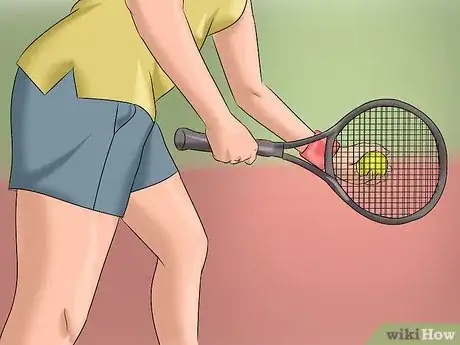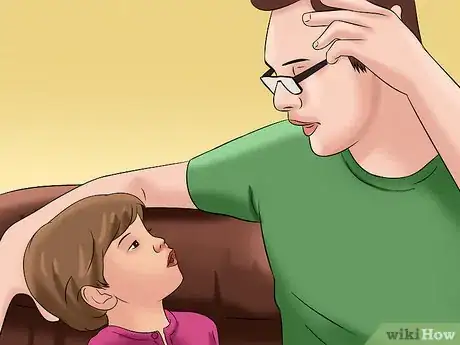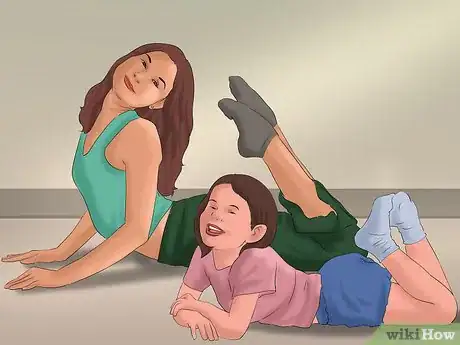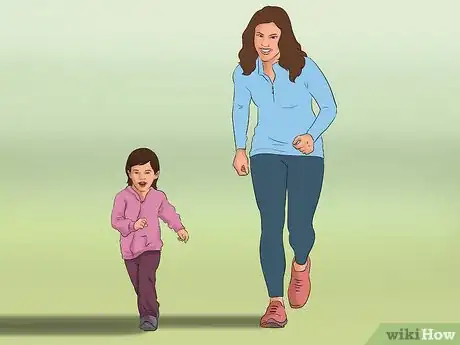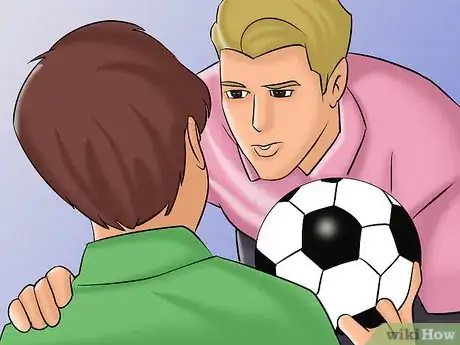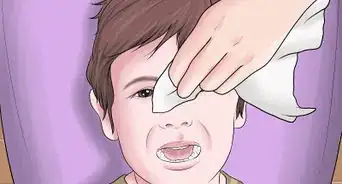This article was co-authored by Laura Marusinec, MD. Dr. Marusinec is a board certified Pediatrician at the Children's Hospital of Wisconsin, where she is on the Clinical Practice Council. She received her M.D. from the Medical College of Wisconsin School of Medicine in 1995 and completed her residency at the Medical College of Wisconsin in Pediatrics in 1998. She is a member of the American Medical Writers Association and the Society for Pediatric Urgent Care.
There are 8 references cited in this article, which can be found at the bottom of the page.
This article has been viewed 50,839 times.
With the increasing popularity of video games, social media, and other indoor activities, children aren’t encouraged to pursue fitness the way they used to be. If your child isn’t as active as you’d like them to be, there are a variety of ways you can motivate them to be more physically engaged every day. This is especially important for children who are still growing and developing, so if you think your child needs to be more active, it’s important to stick with it!
Steps
Adding Physical Elements to Your Child’s Existing Interests
-
1Walk your child to school. Suggest that you and children walk to school instead of driving each day if this is an option for you. This will help get them off to an active start every morning. Not only is this great for the environment and for alleviating traffic congestion during the rush to and from school, it is also a great wake-up exercise and an opportunity for children to make friends.[1]
- You could also encourage your children to ride their bikes to school.
-
2Build on their interest in in-home entertainment. There is no reason why you cannot develop an activity that is based on your child's television or computer game interests. For example, if your child loves Disney Princesses why not work together to write a little play to act out about that very subject? There are many other ways to do this, you just need to apply a little imagination to get them away from the television.[2]
- If your child loves playing video games, encourage them to play games that involve movement – like dancing video games, bowling video games, tennis video games, or other types of video games that promote movement and activity.
- Alternatively, if you allow your child to watch television, you could tell them to do something active during the commercial breaks (like jumping jacks or running in place).
Advertisement -
3Encourage responsibility for pets. If you have a dog, talk to your child about what dogs love to do and what makes them happy. This includes things like going for walks and chasing balls. This could be a very simple and rewarding way to get your child into the open air as well as the opportunity for some quality family time.[3]
- It doesn't even need to be a dog. Cleaning out the fish tank can easily be re-defined from a routine chore to something that your child is doing to make the fish happy.
Learning What Kinds of Activity Your Child Needs
-
1Do aerobic activities. Aerobic exercises are important for an active lifestyle because they make your heart and lungs work harder than they normally do when you are being less active. This will help your child build endurance and it helps your child’s body deliver oxygen to its cells more efficiently.[4] Kids should get around 60 minutes of aerobic activity per day. Some examples of aerobic exercises include:
- Swimming
- Running
- Skating or skateboarding
- Dancing
- Riding bikes
-
2Engage in muscle-strengthening activities. Building up muscle is crucial for children because their bodies are developing and they need muscles to perform everyday activities. Having strong muscles will help them live longer, healthier lives. This type of exercise should be done at least three times per week. Some examples of muscle-strengthening activities include:[5]
- Push-ups, sit-ups, or pull-ups
- Gymnastics
- Climbing
-
3Encourage bone-strengthening exercises. Strong bones are necessary for the general health and well-being of your child. Strong bones allow children to grow and get taller. This type of exercise should be done at least three times per week. Some examples of bone-strengthening activities include: [6]
- Running
- Jumping rope
- Playing basketball, volleyball, or tennis
- Skipping
-
4Understand your child. There might be real underlying psychological reasons that may explain why your child is not active rather than just “laziness.” Talk to your child about why it’s important to be active in life and try to find out if there is a reason they have been avoiding active behaviors.
- Make sure your child is physically healthy enough for exercise. Check with your child's doctor if you have concerns about your child's health that may affect his or her ability to be active.
- It could also be that your child does not feel they can participate in sports or other pursuits because of a perceived lack of skill, embarrassment, or they are being bullied. That needs to be addressed before you can begin to encourage your child to be more active.
Modeling an Active Lifestyle for Your Child
-
1Establish a regular routine. If exercise is a regular part of your weekly routine, your child will learn to incorporate it into their life as well. Your child will accept that active exercise will be expected of them on a regular basis.
- For example, if your child knows that every Saturday morning the family takes a trip to the park and several evenings a week you will go on walks together, they will be less likely to protest.
-
2Engage in energetic activities. If you are active yourself, your message is more likely to have an impact on your child. It doesn't need to be anything high energy. It could be going for a walk, doing some DIY, any pursuit that sees you spend less time on the couch.[7]
-
3Limit your own time in front of the television. If you are wanting your child to become more active, telling them this with the television constantly blaring is going to dilute any attempt you might try to make.
Encouraging Your Child to Be More Active
-
1Don’t force your child into an activity they don’t enjoy. Make the decision to be active about your child and their desires, not about what you want. You should try not force your child to do something they will actively hate just because you think they should do it. This will only have a negative effect on them and in some cases make them more determined to play their computer games.
- Encouragement through understanding your child's interests has to be central to what you are trying to achieve. Only that way will your child begin to understand that they want to do a given activity for themselves and not to please you.
-
2Take advantage of activities in your community. Perceived “laziness” could, in some cases, be explained by your child simply not knowing what activities are available for them to do. They may need some guidance or suggestions as to what active events they can participate in. Let your child know what activities are available to them so that they can make a decision about what activity they would like to participate in.
- Of course, not all families have the same financial situation, which could limit opportunities for recreation. If you can’t afford to pay for sports classes for your child, try to take advantage of programs in your community. Your local city council or local authority will usually have a program of free events that you can show your child.
- However, having too many opportunities to participate in may cause confusion and lead to inactivity in your child. In these cases you may need to talk to your child to help them tease out what it is they would most like to do.
-
3Keep it fun. Children are more likely to be active if they enjoy the activity. Try to incorporate fun into your active lifestyle by introducing games and other exciting elements to keep them engaged and interested in the activities.[8]
- Playing sports, going on walks, going to the park, and engaging in active games with your children (instead of leaving them to play on their own) are great ways to keep the activities fun.[9]
- Make sure that you are encouraging your child to have some play time outside whenever the weather is nice enough for it.
Warnings
- If your child is inactive and won't care no matter what, be careful how you approach them so they don't become angry or spiteful about what you are asking them to do.⧼thumbs_response⧽
References
- ↑ http://www.nhs.uk/Livewell/childhealth6-15/Pages/Getactivewithyourkids.aspx
- ↑ http://familydoctor.org/familydoctor/en/prevention-wellness/exercise-fitness/exercise-basics/keeping-your-child-active.html
- ↑ http://www.nhs.uk/Livewell/childhealth6-15/Pages/Getactivewithyourkids.aspx
- ↑ http://kidshealth.org/en/parents/exercise.html
- ↑ http://familydoctor.org/familydoctor/en/prevention-wellness/exercise-fitness/exercise-basics/keeping-your-child-active.html
- ↑ http://www.cdc.gov/physicalactivity/basics/children/what_counts.htm
- ↑ https://childdevelopmentinfo.com/child-activities/5-ways-to-help-your-child-be-more-physically-active/
- ↑ http://kidshealth.org/en/parents/active-kids.html#
- ↑ https://www.nhlbi.nih.gov/health/educational/wecan/downloads/tip-eat-healthy.pdf
About This Article
To encourage your child to be more active, start by incorporating more physical activity in their daily routine, like going to the park. You could also try walking your child to school rather than driving. If your child loves video games, encourage them to play games that require movement, like dancing games or tennis. Along with games, create an exercise routine with them, which may include running or jogging. Alternatively, enroll them in community activities, like dance classes or yoga. For tips from our Medical co-author on how to help your child decide what physical activities interest them, read on!
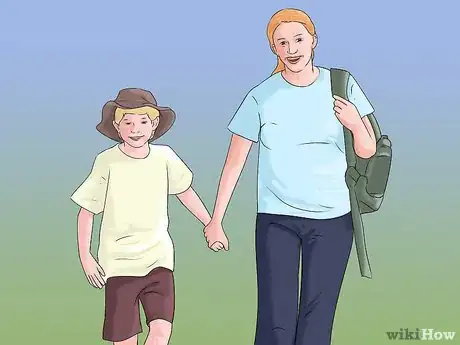

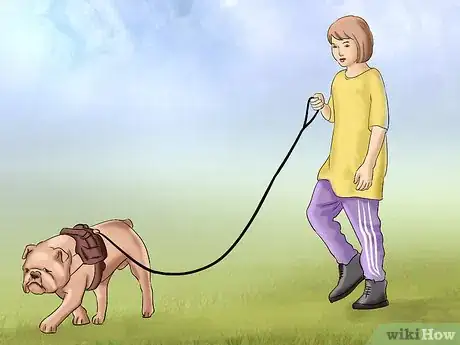
-Step-1.webp)

